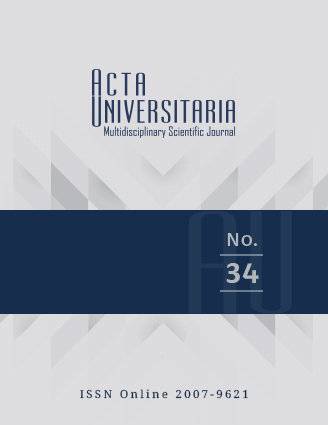Assessment of water stress in the state of Guanajuato considering the demands and availability of sources through the water scarcity index
Published 2024-08-29
How to Cite
Abstract
In semi-arid regions of the planet, it is of great importance to evaluate the degree of water stress experienced by supply sources due to the low availability of water. This becomes even more relevant with the increasing demand and the alteration in precipitation patterns trending towards drought because of climate change. This study evaluated the degree of water stress in the municipalities of Guanajuato by considering the demands and availability of sources, using the water scarcity index. The results show that 86% of the municipalities have a degree of water stress ranging from moderate to extremely high. Additionally, it was observed that only 11% of the municipalities reduce their water stress when drip irrigation with 95% efficiency is implemented, and this reduction occurs six years after its implementation.
References
- Austria, P. F. (2019). Índice de escasez: ¿un indicador de disponibilidad o una herramienta para la gestión del agua? Entorno UDLAP, 9, 18-23. https://www.researchgate.net/publication/335612540/
- Comisión Nacional del Agua (Conagua). (2022). Estadísticas del agua en México 2021. Conagua.
- https://sinav30.conagua.gob.mx:8080/PDF/EAM_2021.pdf
- Coordinación Estatal de Protección Civil de Guanajuato (CEPCG). (2018). Programa estatal de protección civil (Plan de contigencia) para la atención del fenómeno hidrometeorológico para la temporada de lluvias y ciclones tropicales 2018.
- https://servicios-ssp.guanajuato.gob.mx/atlas/hm/documentos/planes%20y%20programas/Plan%20lluvias%202018/01.-%2031052018_2aSO2018_Plan%20Lluvias.pdf
- Distefano, T., & Kelly, S. (2017). Are we in deep water? Water scarcity and its limits to economic growth. Ecological Economics, 142, 130-147. https://doi.org/10.1016/j.ecolecon.2017.06.019
- Esparza, M. (2014). La sequía y la escasez de agua en México: situación actual y perspectivas futuras. Secuencia, 89, 193-219. https://www.scielo.org.mx/scielo.php?pid=S0186-03482014000200008&sc
- Hernández-Romero, P., Patiño-Gómez, C., Corona-Vásquez, B., & Martínez-Smakhtin, V., Revenga, C., & Döll, P. (2004). Taking into account environmental water requirements in global-scale water resources assessments. Comprehensive Assessment Secretariat.
- Instituto Nacional de Estadística y Geografía (INEGI). (2020). Division municipal. https://cuentame.inegi.org.mx/monografias/informacion/gto/territorio/div_municipal.aspx?t
- Nava, L. F., Torres, L., & Orozco, I. (2024). Crisis water management in Mexico. En R. Brears (ed.), The palgrave encyclopedia of sustainable resources and ecosystem resilience (pp. 1-21). Springer. https://doi.org/10.1007/978-3-030-67776-3_56-1
- Organización de las Naciones Unidas para la Alimentación y la Agricultura (FAO). (2013). Afrontar la escasez de agua. Un marco de acción para la agricultura y la seguridad alimentaria. FAO. https://www.fao.org/4/i3015s/i3015s.pdf
- Padilla, E. (2012). La construcción social de la escasez de agua. Una perspectiva teórica anclada en la construcción territorial. Región y Sociedad, 24(3), 1-8. https://www.scielo.org.mx/scielo.php?pid=S1870-39252012000600004&script=sci_arttext
- Pacheco-Treviño, S., & Manzano-Camarillo, M. G. F. (2024). Review of water scarcity assessments: highlights of Mexico's water situation. WIREs, 11(4), 1-16. https://doi.org/10.1002/wat2.1721
- Secretaría de Medio Ambiente y Ordenamiento Territorial (SMAOT). (2010). Diagnóstico climatológico y prospectiva sobre vulnerabilidad al cambio climático en el estado de Guanajuato (2010). https://smaot.guanajuato.gob.mx/sitio/cambio-climatico/185/Publicaciones-sobre-cambio-climático
- Secretaría de Desarrollo Agroalimentario y Rural (SDAyR). (2020). Mi riego productivo ejercicio 2020 evaluación de impactos de la tecnificación del riego en Guanajuato. https://sdayr.guanajuato.gob.mx/contenido/adjuntos/evaluaciones/2020/Evaluacion_de_la_Tecnificacion_del_Riego_en_el_Estado_de_Guanajuato.pdf
- Secretaría de Medio Ambiente y Ordenamiento Territorial (SMOAT). (2021). El estado de Guanajuato frente al cambio climático [Infografía]. https://smaot.guanajuato.gob.mx/sitio/cambio-climatico/img/adaptacioninfografia.png
- Tennant, D. L. (1976). Instream flow regimens for fish, wildlife, recreation and related Environmental Resources. Fisheries, 1(4), 6-10. https://doi.org/10.1577/1548-8446(1976)001<0006:IFRFFW>2.0.CO;2
- Tzanakakis, V. A., Paranychianakis, N. V., & Angelakis, A. N. (2020). Water supply and water scarcity. Water, 12(9), 1-15. https://doi.org/10.3390/w12092347
- Veldkamp, T. I. E., Wada, Y., Moel, H., Kummu, M., Eisner, S., Jeroen C. J. H., & Ward, P. J. (2015). Changing mechanism of global water scarcity events: Impacts of socioeconomic changes and inter-annual hydro-climatic variability. Global Environmental Change, 32, 18-29. https://doi.org/10.1016/j.gloenvcha.2015.02.011
- Vörösmarty, C. J., Douglas, E. M., Green, P. A., & Revenga, C. (2005). Geospatial indicators of emerging water stress: an application to Africa. AMBIO, 34(3), 230-236. https://doi.org/10.1579/0044-7447-34.3.230
- Wada, Y., van Beek, L. P. H., Viviroli, D., Dürr, H. H., Weingartner, R., & Bierkens M. F. P. (2011). Global monthly water stress: 2. Water demand and severity of water stress. Water Resources Research, 47(7), 1-17. https://doi.org/10.1029/2010WR009792

